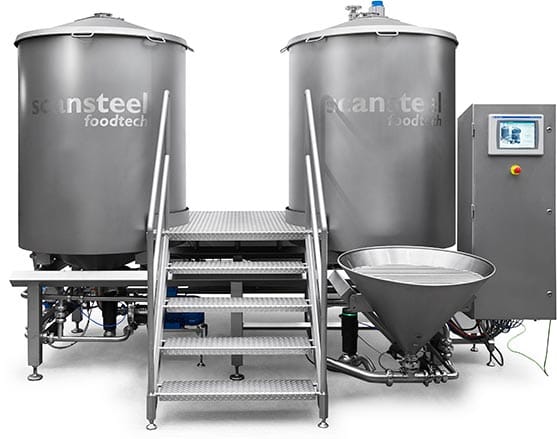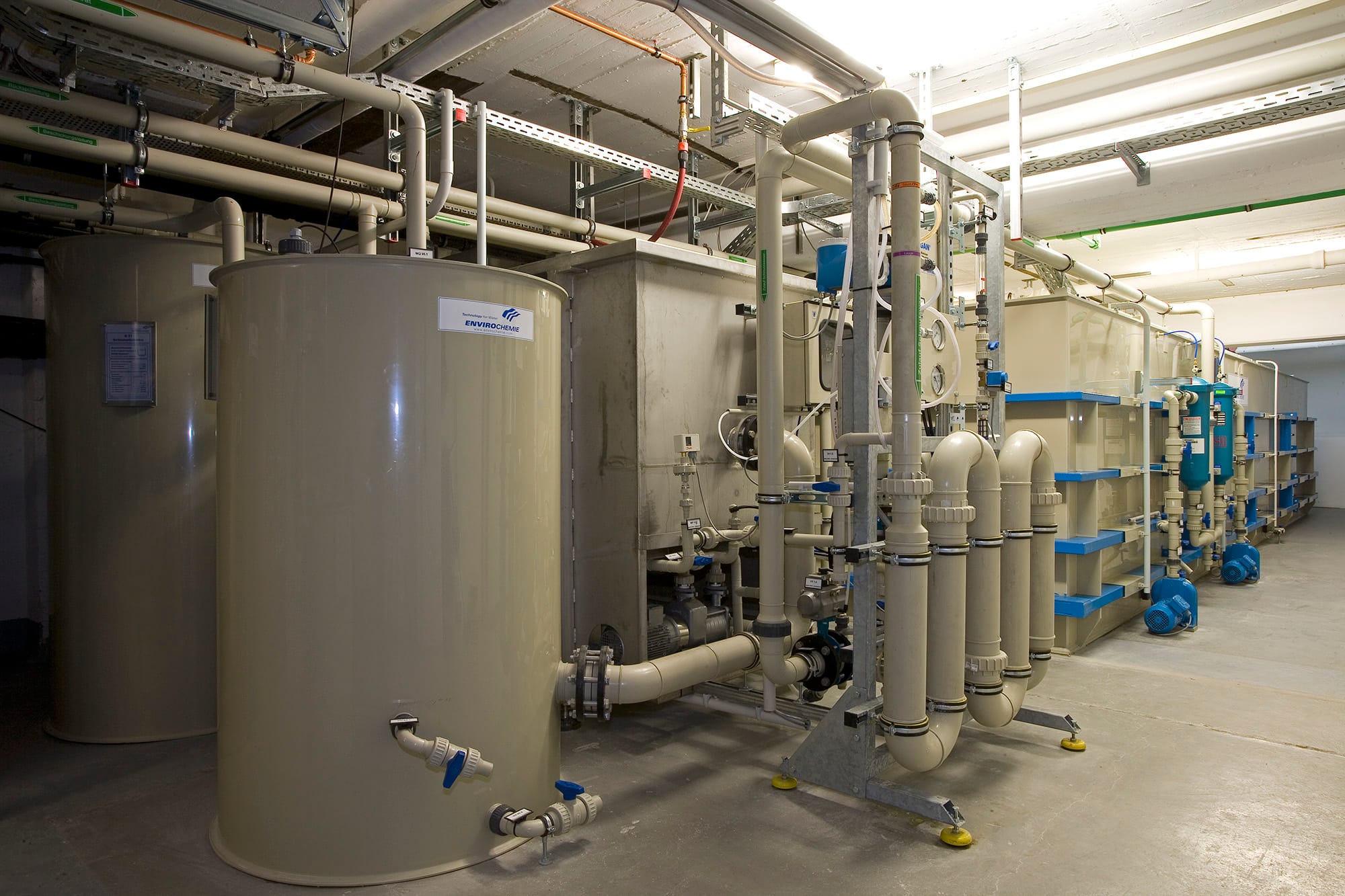Water Treatment Technologies for Sauce and Gravy Production
In the culinary world, sauces and gravies play a critical role, not only enhancing flavor but also providing texture and consistency to many dishes. However, the production of these delicious accompaniments can have significant environmental consequences, particularly concerning water use and wastewater generation. Sauce and gravy production is a water-intensive process, and it results in wastewater containing high levels of organic matter, oils, and other pollutants. Effective water treatment technologies are essential to ensure both the sustainability of production and compliance with environmental regulations.

Importance of Water in Sauce and Gravy Production
Water is indispensable in sauce and gravy manufacturing. It serves not only as a key ingredient but also facilitates heat transfer and acts as a cleaning agent during production. However, this extensive use of water generates large volumes of wastewater, which must be treated before being discharged or reused. Wastewater from sauce and gravy production often contains fats, oils, greases (FOG), particulate matter, and high levels of organic material. Without proper treatment, this can lead to environmental harm, clogged drainage systems, and non-compliance with wastewater discharge regulations.
In addition to the environmental challenges, the quality of water used in sauce and gravy production has a direct impact on the quality of the final product. Contaminants in the water can affect flavor, texture, and even safety, making it essential to ensure the water used is properly treated.

Filtration Systems: The First Line of Defense
One of the first steps in managing water in sauce and gravy production is to employ filtration systems. These systems help remove suspended solids and particulate matter that could interfere with both the production process and the final product's quality. Mechanical filtration systems, such as screens, physically separate larger particles from the water. More advanced techniques like membrane filtration—such as microfiltration, ultrafiltration, and nanofiltration—help remove finer particles, bacteria, and other impurities that could affect product consistency and safety.
Filtration systems are also crucial in ensuring that the water used in sauce and gravy production meets the necessary health and safety standards. Removing solid contaminants early in the process ensures that subsequent treatment steps can focus on removing dissolved substances, fats, and oils. Membrane filtration can be particularly effective in industries where hygiene is of utmost importance, as it helps reduce the microbial load in the water.
Biological Treatment: Harnessing Nature for Wastewater Management
Following filtration, biological treatment is commonly employed to treat the organic matter present in wastewater from sauce and gravy production. This is essential, as the high levels of biochemical oxygen demand (BOD) and chemical oxygen demand (COD) in the wastewater could otherwise disrupt ecosystems if discharged untreated. Biological treatment methods leverage microorganisms to break down organic materials, transforming them into simpler, non-harmful substances.
The most widely used biological treatment method is the activated sludge process, where aeration tanks promote the growth of bacteria that consume organic waste. These bacteria break down fats, oils, and greases (FOG), reducing the overall load of organic material in the wastewater. This treated water can then be discharged or reused, reducing both environmental impact and operational costs. For facilities requiring a more compact solution, membrane bioreactors (MBRs) combine biological treatment with membrane filtration to produce high-quality effluent with a reduced footprint, making them ideal for urban or space-constrained production facilities.
Advanced Oxidation Processes (AOPs): Treating Hard-to-Remove Contaminants
Some contaminants, particularly in wastewater from the food industry, can be challenging to break down using conventional biological treatments alone. This is where Advanced Oxidation Processes (AOPs) come into play. AOPs use strong oxidizing agents to degrade difficult-to-remove organic compounds, ensuring that the water discharged is safe for the environment or ready for reuse.
Common AOPs include ozone treatment, where ozone is used as a powerful oxidizer to break down organic pollutants and disinfect the water. Another frequently employed method is UV/hydrogen peroxide treatment, which utilizes ultraviolet light to activate hydrogen peroxide, generating hydroxyl radicals that can degrade even the most stubborn organic contaminants. These processes are particularly useful in ensuring that no harmful residuals, like pathogens or persistent organic pollutants, remain in the wastewater.
Physical-Chemical Treatment: A Comprehensive Approach
In addition to biological and advanced oxidation methods, physical-chemical treatments are often employed to tackle the unique challenges posed by sauce and gravy production wastewater. Physical-chemical treatments are particularly effective at removing fats, oils, greases (FOG), and other pollutants that are less responsive to biological treatment alone. This approach typically involves coagulation and flocculation, where chemicals are added to agglomerate fine suspended particles into larger clumps (flocs). These flocs can then be removed by sedimentation or filtration, leaving behind cleaner water.
Another technology commonly used in the sauce and gravy industry is dissolved air flotation (DAF), which excels at removing oils and greases from wastewater. In a DAF system, air is injected into the wastewater under pressure, causing fine air bubbles to attach to suspended particles and oils. These particles then float to the surface, where they can be skimmed off, leaving behind water that is easier to treat further down the line.
Water Recovery and Reuse: Enhancing Water Efficiency
A key aspect of sustainable water management is the recovery and reuse of treated water. Water recovery systems help sauce and gravy manufacturers reduce their freshwater consumption by treating wastewater to a high enough quality that it can be reused within the production process. Technologies such as reverse osmosis (RO) and membrane distillation are frequently used to achieve this. Reverse osmosis, for example, can remove dissolved salts and other impurities from wastewater, producing high-quality water that can be reused in production, cleaning, or cooling processes.
Water reuse not only conserves freshwater resources but also reduces the amount of wastewater that must be treated and discharged, offering significant cost savings and environmental benefits. In industries where water usage is high, such as sauce and gravy production, adopting water recovery and reuse strategies is a practical step toward greater sustainability and operational efficiency.
Compliance and Sustainability: Meeting Industry Standards
In the sauce and gravy industry, adhering to regulatory standards is non-negotiable. Regulatory compliance for wastewater discharge involves meeting strict limits on the levels of pollutants that can be present in wastewater before it is released into the environment. However, investing in advanced water treatment technologies helps manufacturers stay compliant while reducing their environmental footprint.
Furthermore, implementing sustainable water treatment practices contributes to a company's corporate social responsibility (CSR) goals, enhancing its public image as an environmentally responsible organization. Sustainable wastewater management also aligns with global trends in resource conservation, making it easier for companies to participate in circular economy initiatives and reduce their overall water consumption.

Conclusion
The sauce and gravy production industry faces unique challenges in managing its water usage and wastewater discharge. By investing in advanced water treatment technologies, manufacturers can not only improve their operational efficiency and product quality but also ensure compliance with environmental regulations. Filtration, biological treatment, advanced oxidation processes, physical-chemical treatments, and water recovery systems all play a crucial role in addressing the industry's water management needs. In an era where sustainability is becoming a top priority, embracing these technologies is essential for the long-term success of sauce and gravy producers.